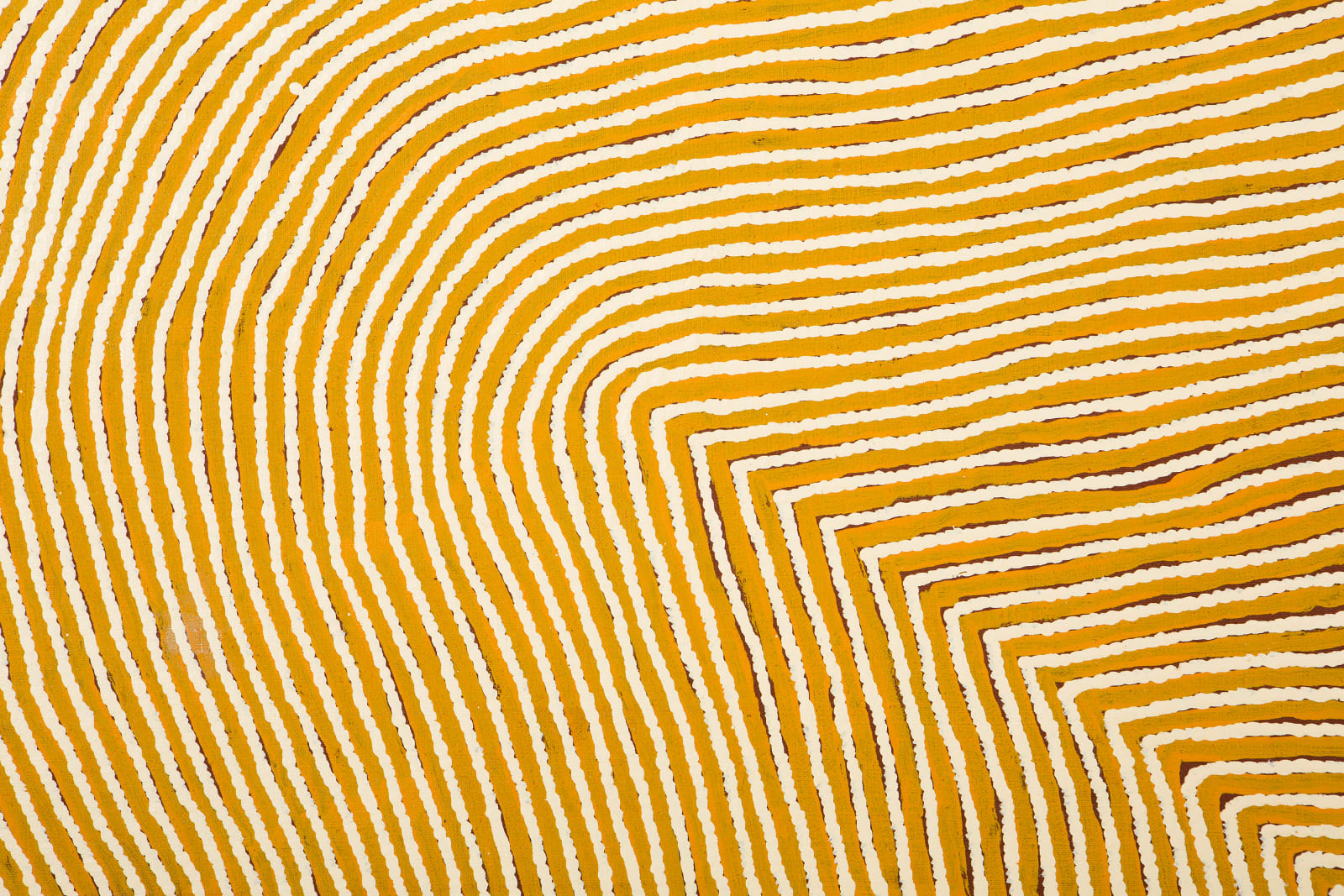
Warlimpirrnga Tjapaltjarri, Untitled, 2017
Photo: Courtesy of the artist and Salon 94

(detail) Warlimpirrnga Tjapaltjarri, Untitled, 2017
Photo: Courtesy of the artist and Salon 94

(detail) Warlimpirrnga Tjapaltjarri, Untitled, 2017
Photo: Courtesy of the artist and Salon 94

(detail) Warlimpirrnga Tjapaltjarri, Untitled, 2017
Photo: Courtesy of the artist and Salon 94

(detail) Warlimpirrnga Tjapaltjarri, Untitled, 2017
Photo: Courtesy of the artist and Salon 94

(detail) Warlimpirrnga Tjapaltjarri, Untitled, 2017
Photo: Courtesy of the artist and Salon 94
Warlimpirrnga Tjapaltjarri Pintupi language group, circa 1950
Further images
Provenance
The Artist, painted at Kiwirrkura, Western Australia, 2017
Papunya Tula Artists, Alice Springs, Northern Territory, cat. no. WT1710031
Salon 94, New York, cat. no. WTj 50
Collection of Steve Martin & Anne Stringfield, New York
Exhibitions
Art Basel Miami Beach, Salon 94, Miami, 7 - 10 December 2017
Twenty Aboriginal Paintings, UOVO, New York, 15 - 19 January 2019
60 over 50: 60 Paintings from 50 Years of Australian First Nations Art, UOVO, New York, May 2023
Literature
Steve Martin, Twenty Aboriginal Paintings, UOVO Art, 2019, p. 10 (illus.)
Vanessa Merlino and Luke Scholes, 60 over 50: 60 Paintings from 50 Years of Australian First Nations Art, UOVO, 2023 (illus.)
This painting depicts designs associated with the salt lake site of Wilkinkarra (Lake Mackay) in Western Australia. In mythological times two Tingari Men travelled Wilkinkarra from the soakage water site of Marawa in the west. When the men arrived at Wilkinkarra they lit a large fire in order to flush out the malu (kangaroo). They later entered the earth and continued their travels underground towards the east. This story forms part of the Tingari Cycle. Since events associated with the Tingari Cycle are of a secret nature no further detail was given. Generally, the Tingari are a group of ancestral beings of the Dreaming who travelled over vast stretches of the country, performing rituals and creating and shaping particular sites. The Tingari men were usually followed by Tingari women and were accompanied by novices, and their travels and adventures are enshrined in a number of song cycles. These ancestral stories form part of the teachings of the post initiatory youths today as well as providing explanations for contemporary customs. (Text from Papunya Tula Artists)







